I.2.15 Pompeii. Small house. Excavated 1869 and 1873. Bombed in 1943.
Part 2 Part 1

I.2.15 Pompeii. December 2005. Vaulted rainwater cistern, under the west side of the house.
According to Garcia y Garcia, the puteal in the atrium on the west side of the entrance doorway was connected to this cistern.
See Garcia y
Garcia, L., 2006. Danni di guerra a Pompei. Rome: L’Erma di Bretschneider. (p.37)

I.2.15 Pompeii. September 2010. Looking east into rainwater cistern. Photo courtesy of Drew Baker.

I.2.15 Pompeii. December 2005. Vaulted cistern partly visible from I.2.14
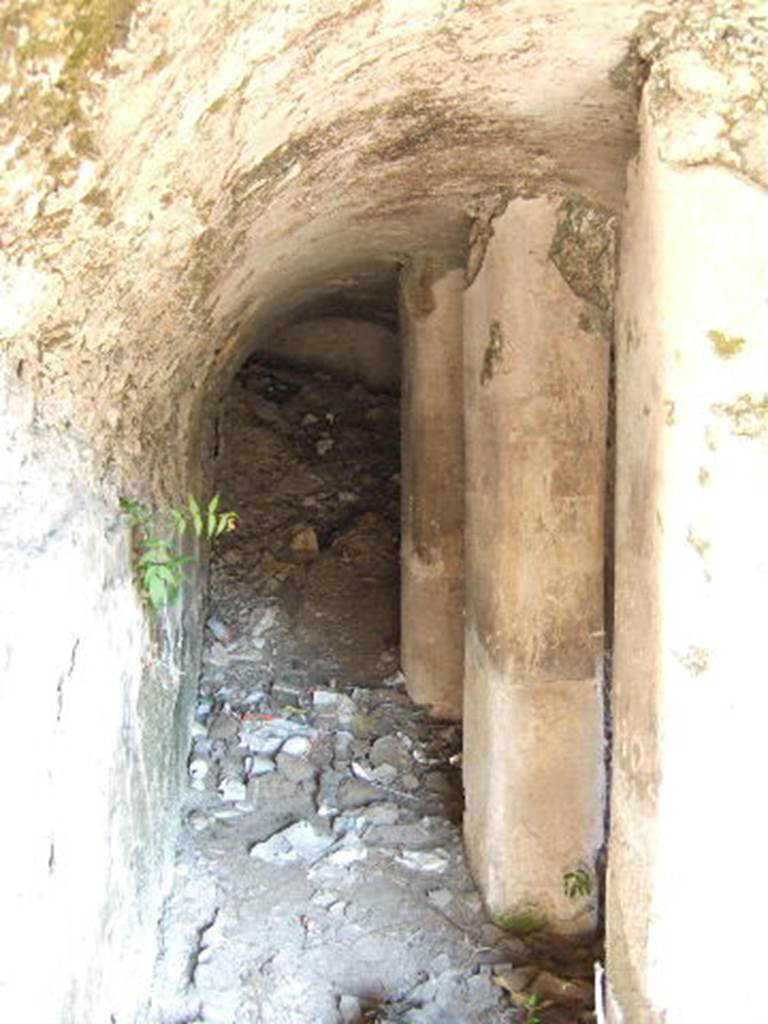
I.2.15 Pompeii. December 2005. Vaulted cistern partly visible from I.2.14, propped up with columns
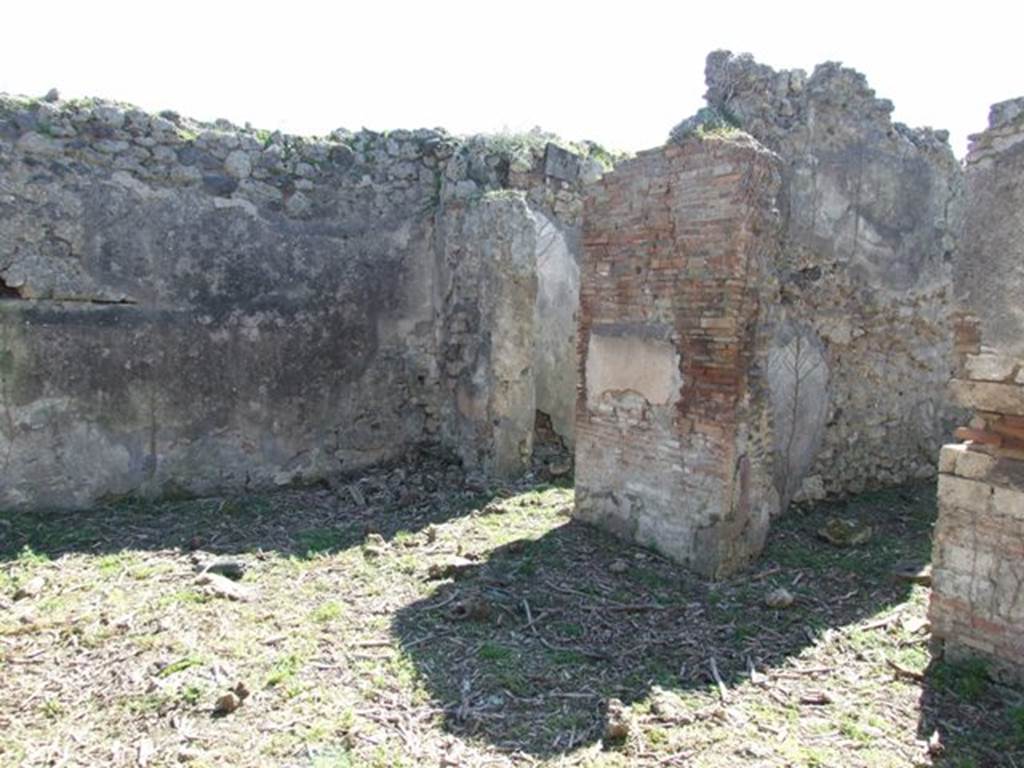
I.2.15 Pompeii. March 2009. Doorways to two rooms on west side of atrium.
According to Warscher, quoting Mau in Bull. Inst, 1873, p.240, she wrote –
“Adesso le pareti
della casa in questione sono nude. Nell’anno 1873 Mau ha scritto –
“Un piccolo
quadro molto distrutto si trova in una stanza a destra dell’atrio d’una casa
sul lato del nord della stessa isola, la cui porta è la quarta contando
dall’est.
Si distinguono
due persone, delle quali quella seduta a sinistra è vestita di chitone giallo e
clamide rossa. Mi pare essere un uomo. Gli sta dirimpetto un giovane che per il
cappello e un bastone, che potrebbe essere un caduceo, forse deve ritenersi per
Mercurio. Egli è vestito d’un chitone giallo, corto e cinto e d’una clamide che
riposandogli sul braccio sinistra avvolge la parte media del corpo, lasciando
libere le gambe. Stende la mano destra
verso la persona assisa”.
See Sogliano, A.,
1879. Le pitture murali campane scoverte
negli anni 1867-79. Napoli: Giannini. (p.37, no.152, described as “Hermes e
figura indeterminata”).
See Warscher T., 1935. Codex Topographicus Pompeianus: Regio I.2. Rome: DAIR.
(translation: "Now the walls of the house in question are bare. In the year 1873 Mau wrote –
"A small very destroyed painting was located in a room to the right of the entrance hall of a house on the north side of the same insula, whose doorway was the fourth counting from the east. One can distinguish two people, the one sitting to the left was dressed in a yellow tunic and red cloak. It seemed to me to be a man. He was facing a young man that by his hat and a cane, that may have been a caduceus, perhaps should be considered to be Mercury.
He was dressed in a short yellow tunic and girdle, and a cloak resting on his left arm that wrapped around the middle part of his body, leaving free the legs. He was extending his right hand towards the seated person.")
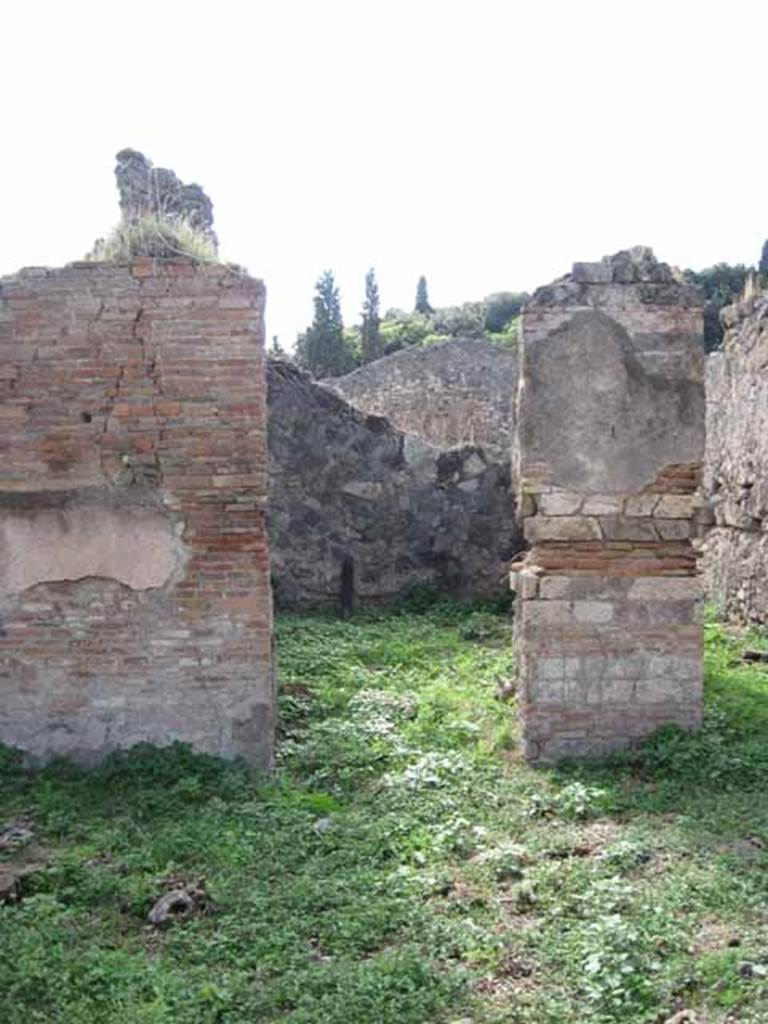
I.2.15 Pompeii. September 2010. Looking west to doorway to room on west side of atrium, on south side of corridor.
Photo courtesy of Drew Baker.
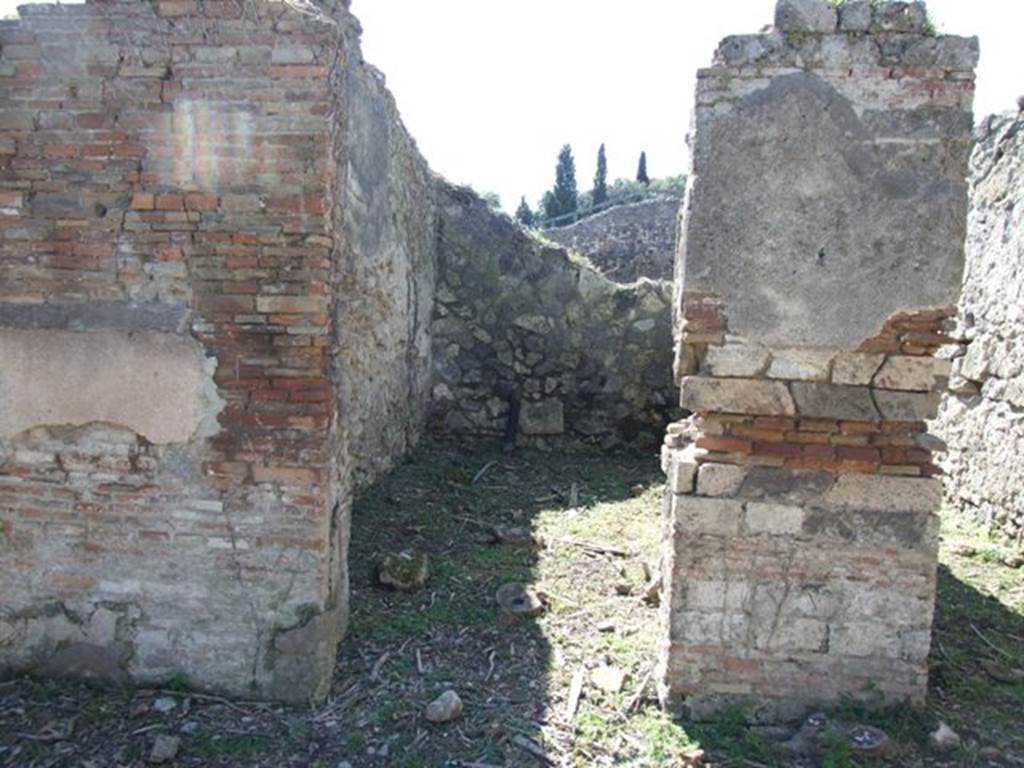
I.2.15 Pompeii. March 2009. Doorway to room on west side of atrium, on south side of corridor.
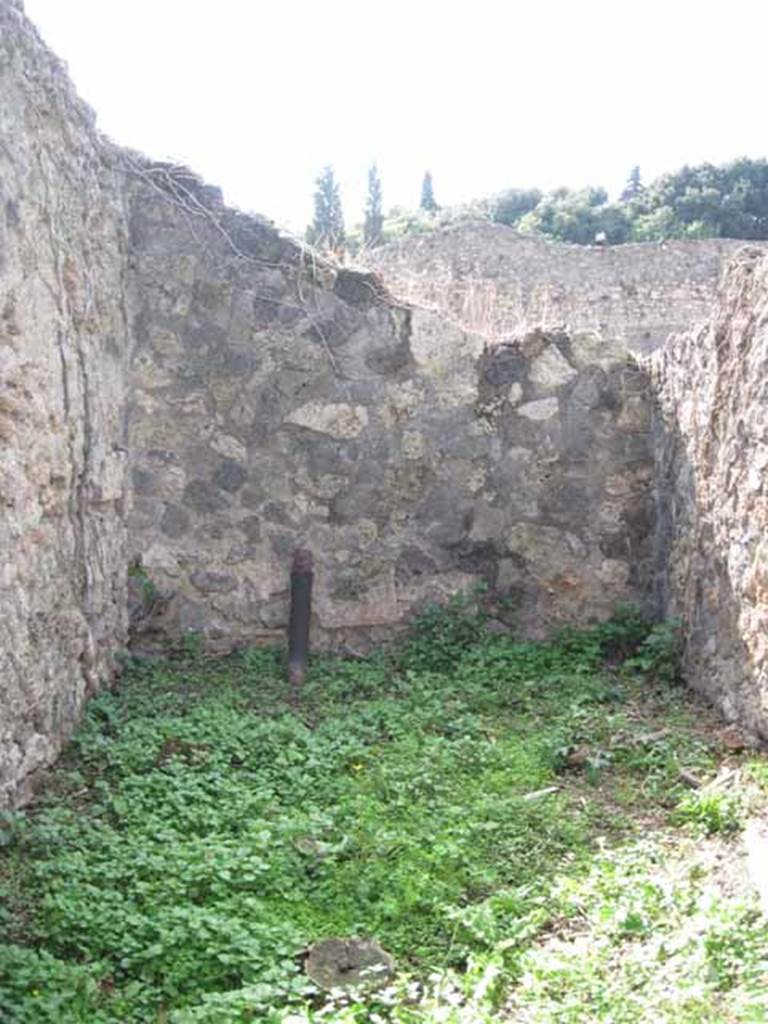
I.2.15 Pompeii. September 2010. West wall of room on south side of corridor. Photo courtesy of Drew Baker.
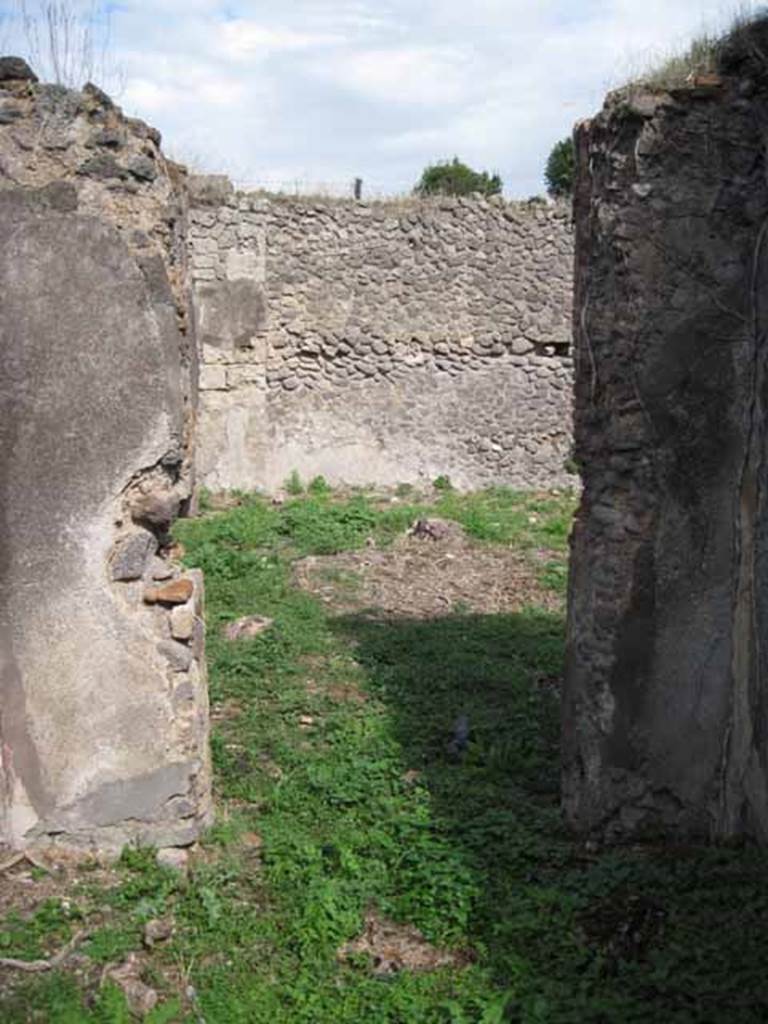
I.2.15 Pompeii. September 2010. East wall with doorway to atrium, of room on south side of corridor.
Photo courtesy of Drew Baker.
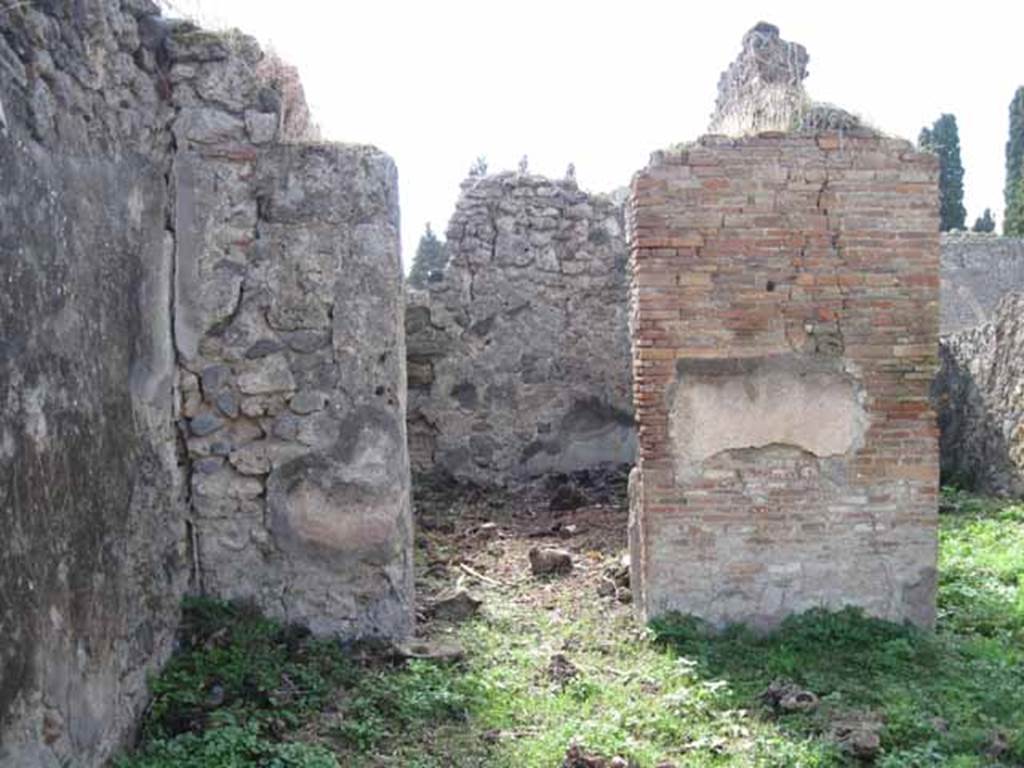
I.2.15 Pompeii. September 2010. Looking west to doorway to room in south-west corner of atrium. Photo courtesy of Drew Baker.
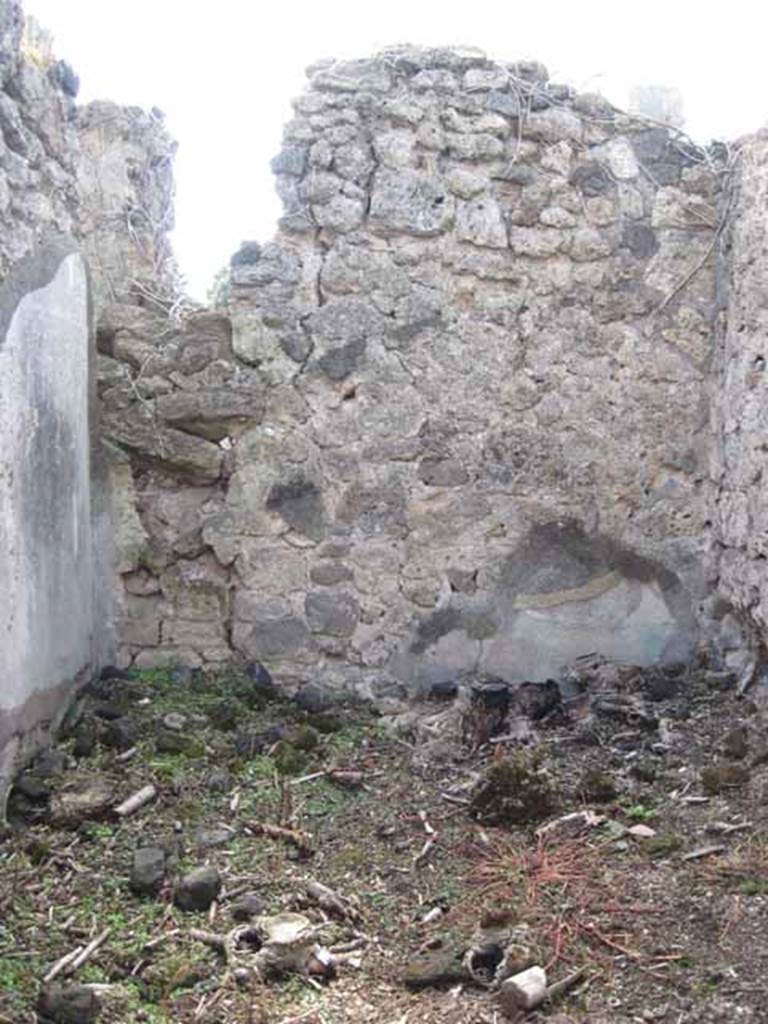
I.2.15 Pompeii. September 2010. West wall of room in south-west corner of atrium.
Photo courtesy of Drew Baker.
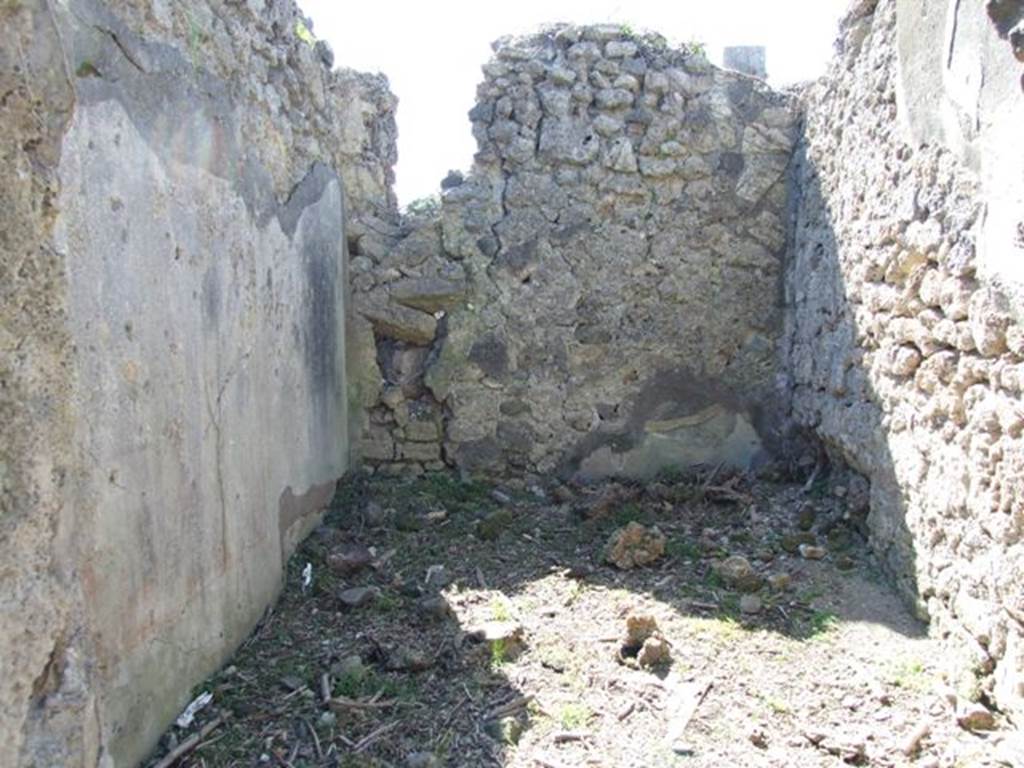
I.2.15 Pompeii. March 2009. West wall of room on west of atrium, in south-west corner.
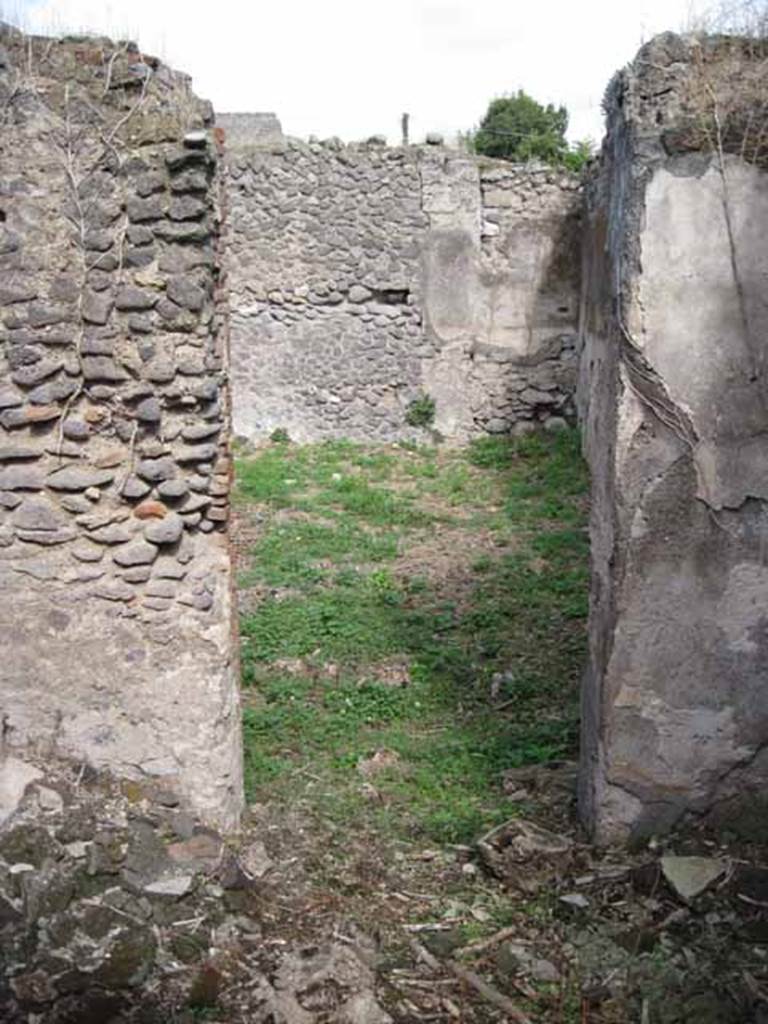
I.2.15 Pompeii. September 2010. East wall with doorway to south-west corner of atrium.
Photo courtesy of Drew Baker.
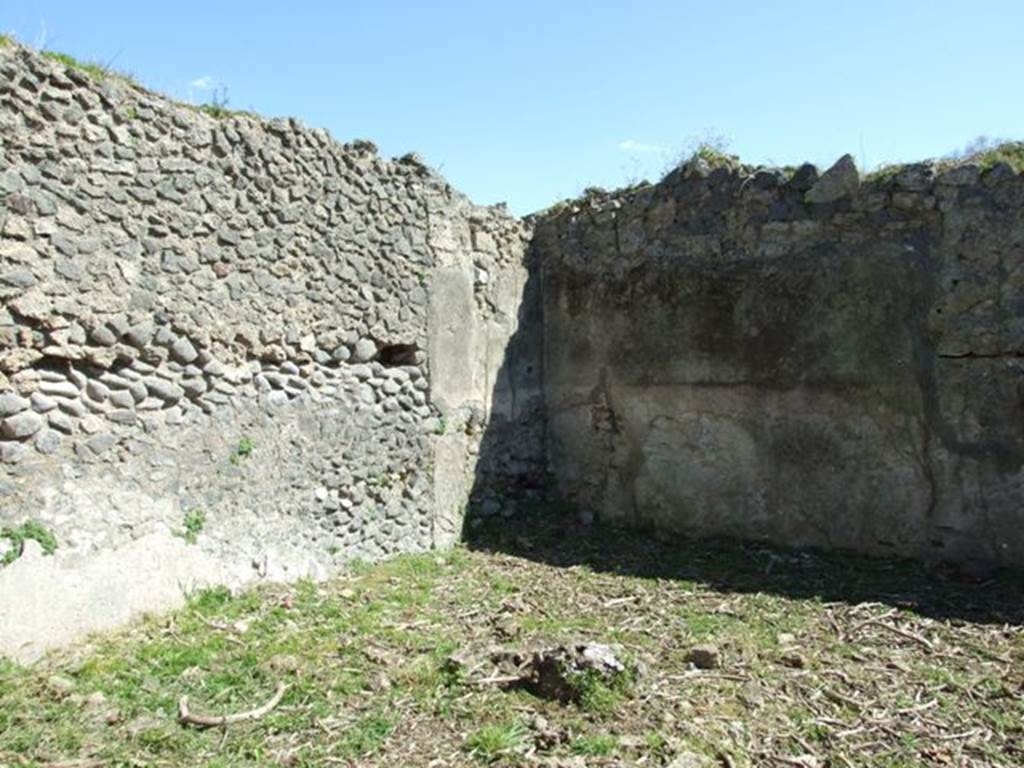
I.2.15 Pompeii. March 2009. South-east corner of atrium.
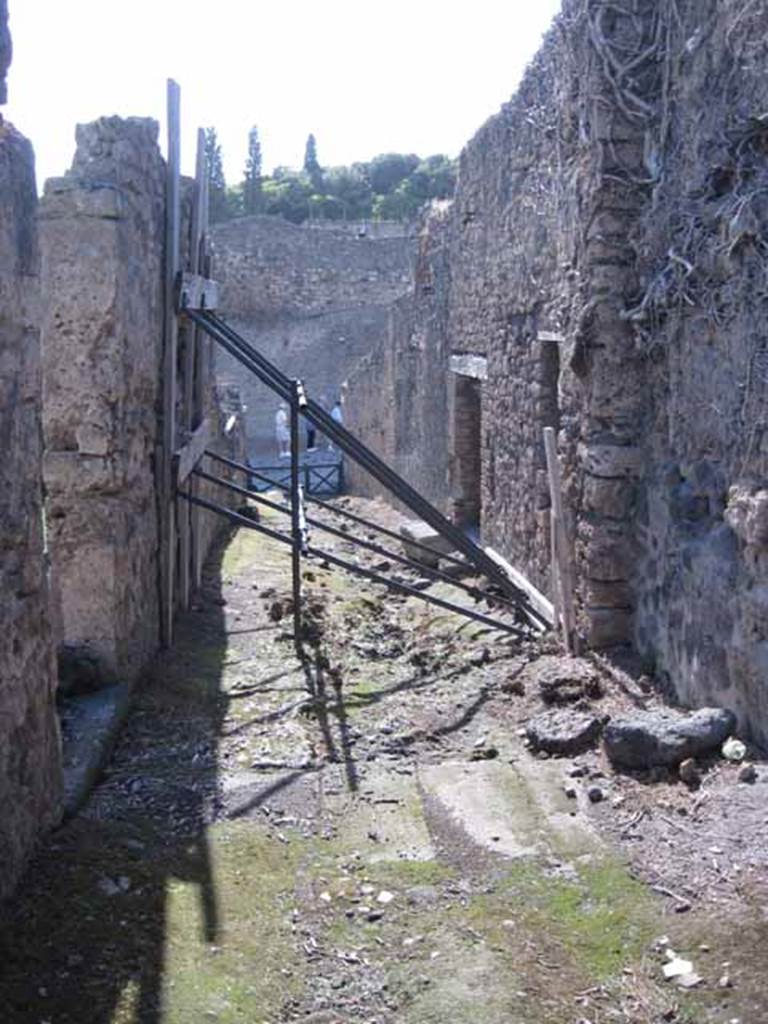
1.2.15 Pompeii. September 2010. Looking west along unnamed vicolo towards Via Stabiana, from near entrance.
Photo courtesy of Drew Baker.
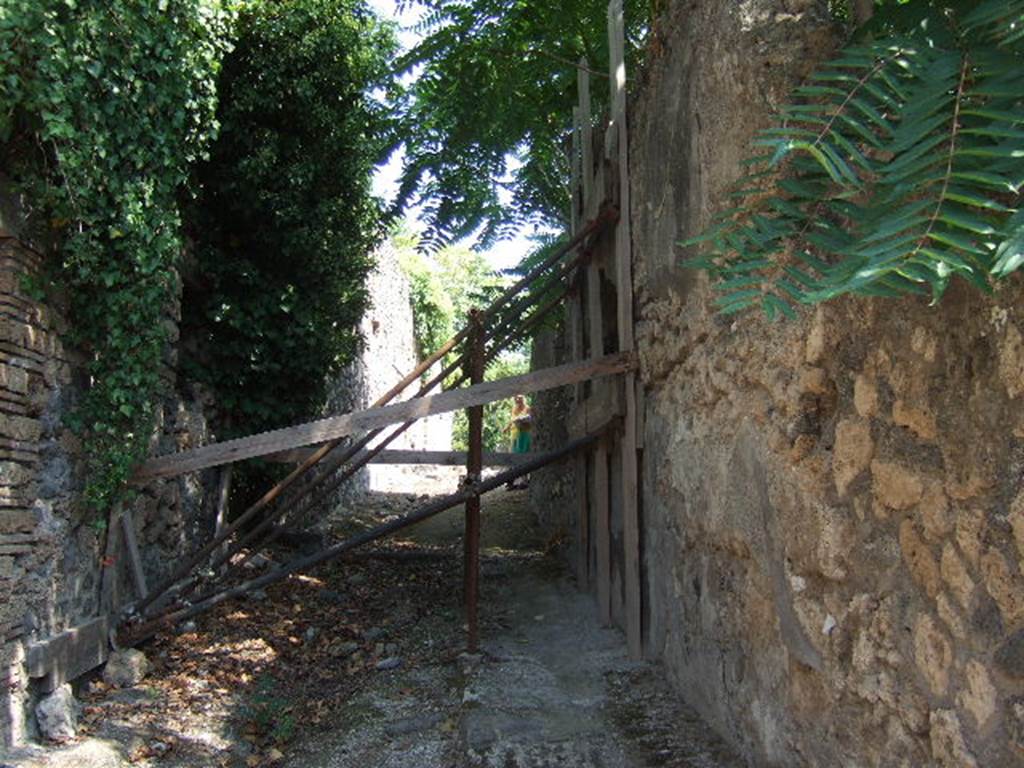
I.3 Pompeii. September 2005. Unnamed vicolo looking east towards entrance.
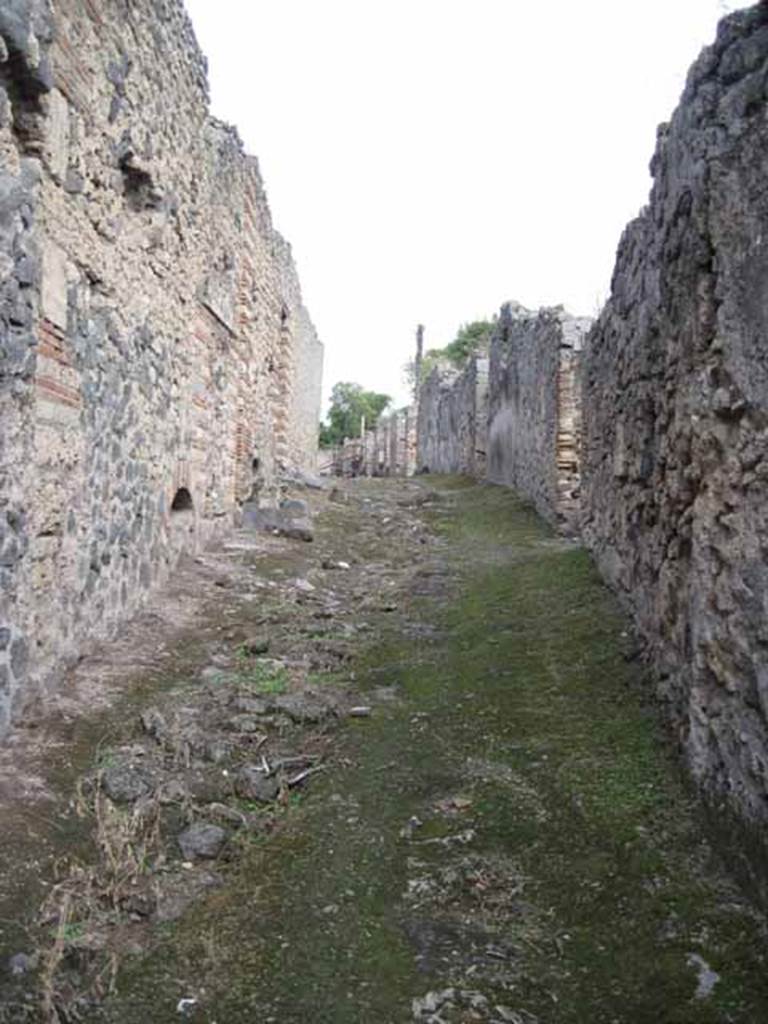
I.2.15 Pompeii. September 2010. Looking east along unnamed vicolo from near entrance.
Photo courtesy of Drew Baker.
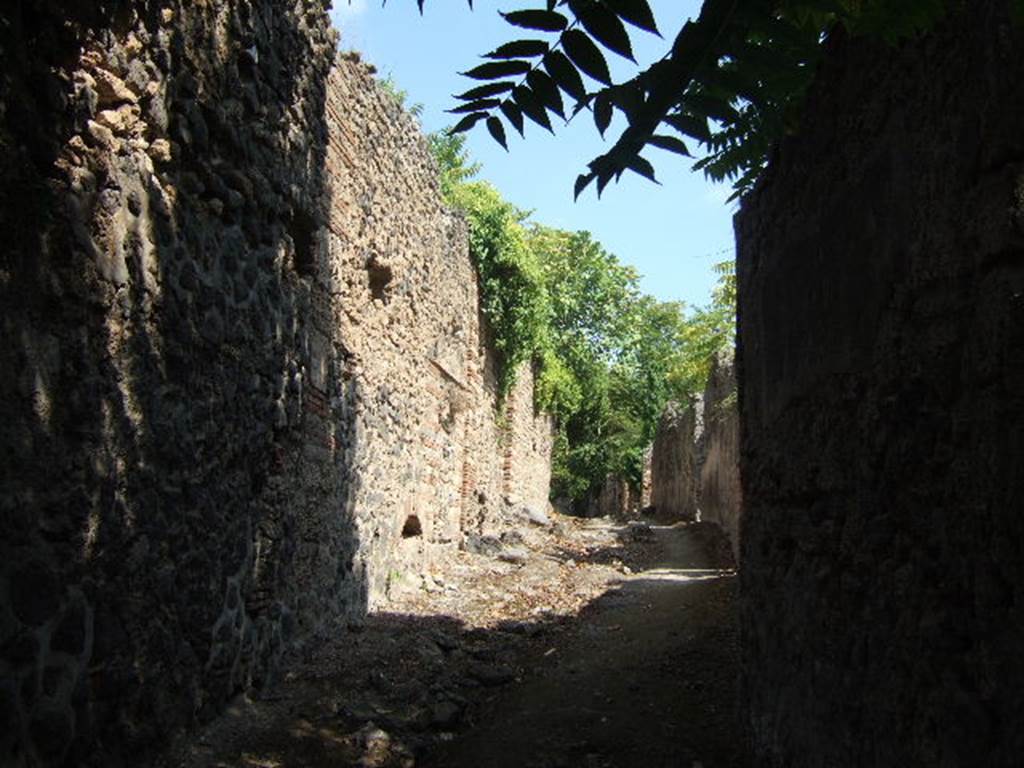
I.3 Pompeii, on left. September 2005. Unnamed vicolo looking east. I.2.15, on right.
In Codex Topographicus Pompeianus: Regio I.2, (the copy at DAIR), Warscher included Viola’s description of the insula, from
Gli scavi di Pompei dal 1873 al 1878, p.10 (Pompei e la regione sotterrata dal
Vesuvio nell’anno 1879, Seconda parte.
This is included at the end in all parts of I.2 on the website.
“Nel dicembre del
1873 incomminciò lo scavo di questa isola – quale dovette essere abitata da
moltissime persone. Infatti non si vede grande lusso di abitazioni, nè grandi
locali, ove i ricchi pompeiani passavano la vita nell’ozio e nel piacere; si
può invece osservare grand’economia di spazio, case piccole miste a botteghe e
ad officine, onde non è difficile argomentare che quivi abitarono persone del
ceto medio, le quali benchè agiate non godevano certamente della più splendide
posizione.
E’ questa
un’isola dove avennero frequentissime trasformazioni, per cui riesce
difficillissimo intravvedere qual’era la sua forma primiera; non mancano però
degli avanzi di costruzioni primitive, insieme ad altri di epoca posteriore,
come si osserva in molti luoghi di Pompei.
La sua area è di
mq.2948, ed è limitata da occidente dal cardo, a settentrione dalla via
secunda, ad oriente dal vico parallelo al cardo e a mezzogiorno dalla via
tertia che la separa dalle isole 1 e 5; il margine che la fiancheggia da tre
lati escluso l’orientale e sulla via tertia di fronte al vano No.28 si vede un
piccolo ponte, formato da massi posti a contrasto, il quale serve per unire i
due margine (vedi la fotografia no.42c)”.
(Note: photo (no.42c) can be seen at I.5.1, I.2.28 and in the “streets” section under Vicolo del Conciapelle).
See Warscher T., 1935. Codex Topographicus Pompeianus: Regio I.2. Rome: DAIR.
(translation: "In December of 1873 the excavation of this insula began – which would have been inhabited by many people. In fact you don't see great luxury homes, nor large rooms, where rich Pompeian passed life in idleness and pleasure; if you instead look at the great economy of space, small homes and shops mixed with workshops, it's not difficult to argue that here lived people in the middle class, which however well-to-do they certainly did not enjoy the most splendid position.
This was an insula, where there were frequent transformations, for which it is difficult to glimpse what was the original form; it does not lack however, the remains of primitive constructions, alongside others of a later date, as can be seen in many places in Pompeii.
Its area was 2948 sq. m., and was bounded on the west by the “cardo”, on the north by via secunda, and east by a parallel vicolo to the “cardo” and in the south by the via tertia, that separated it from Insula’s 1 and 5: the border that flanked it by three sides excluding the east and on via tertia opposite No. 28, you will see a small bridge, formed by a boulder placed to serve to unite the two edges, (see photo No. 42 c)."